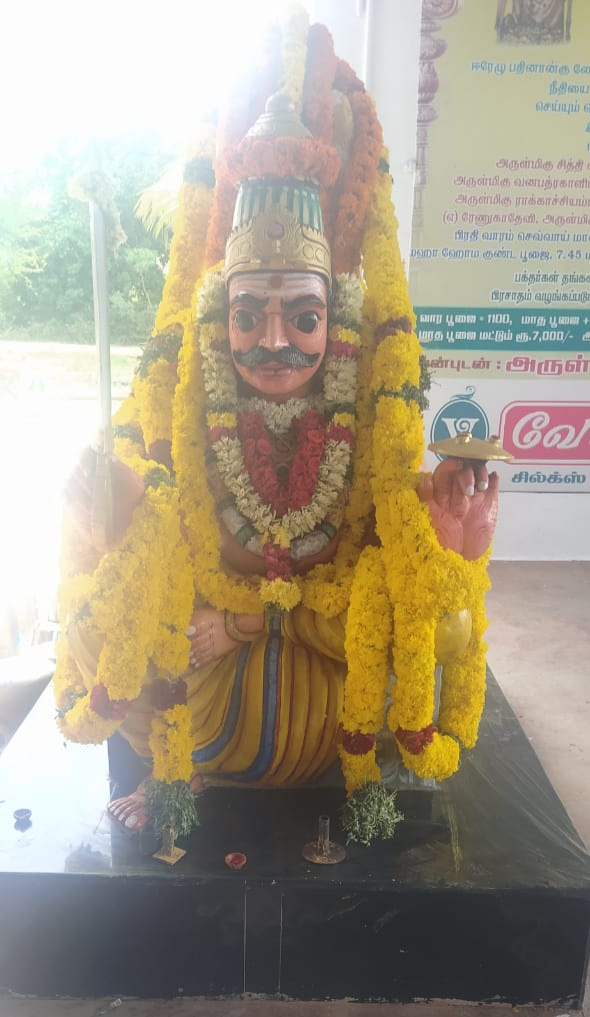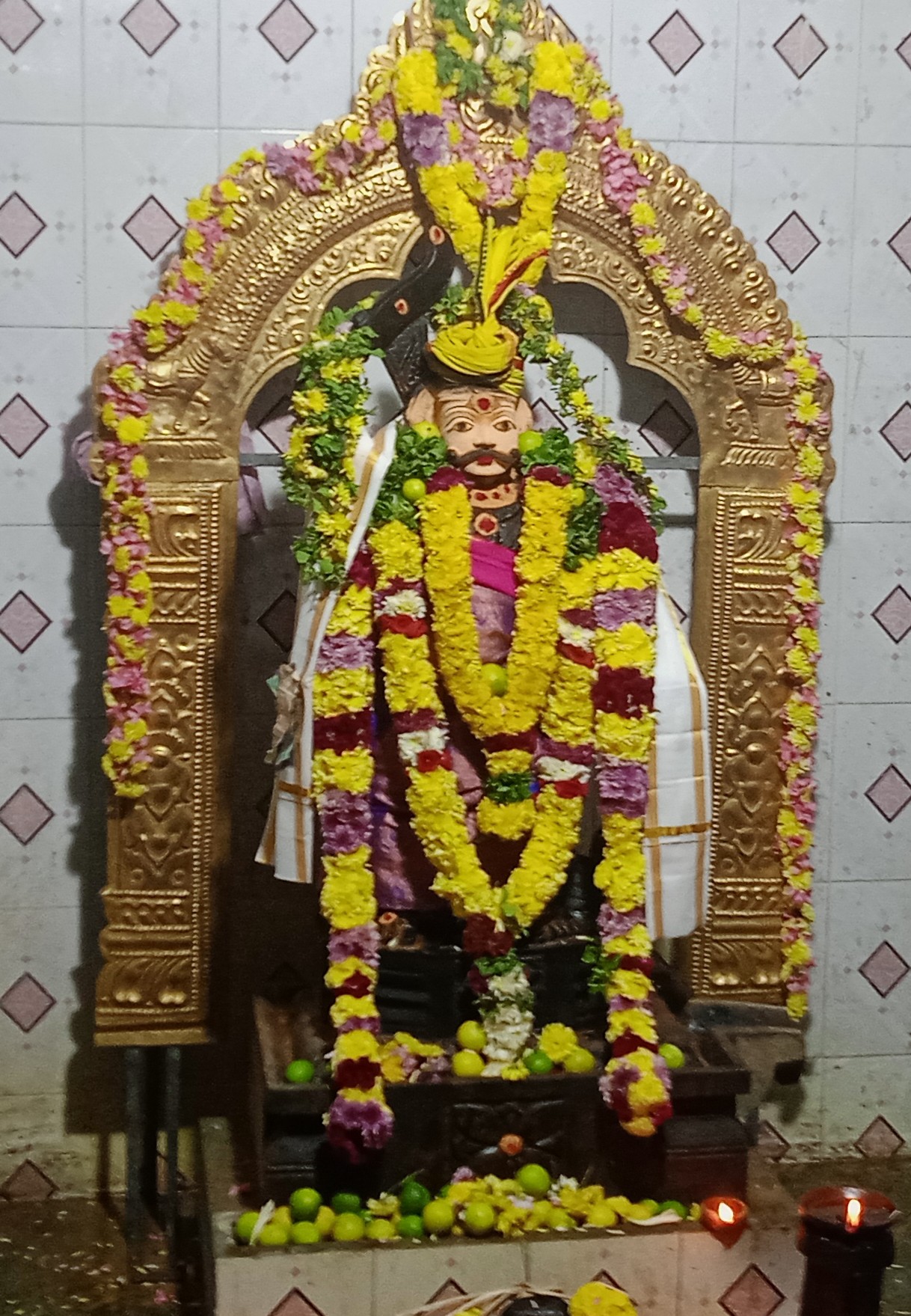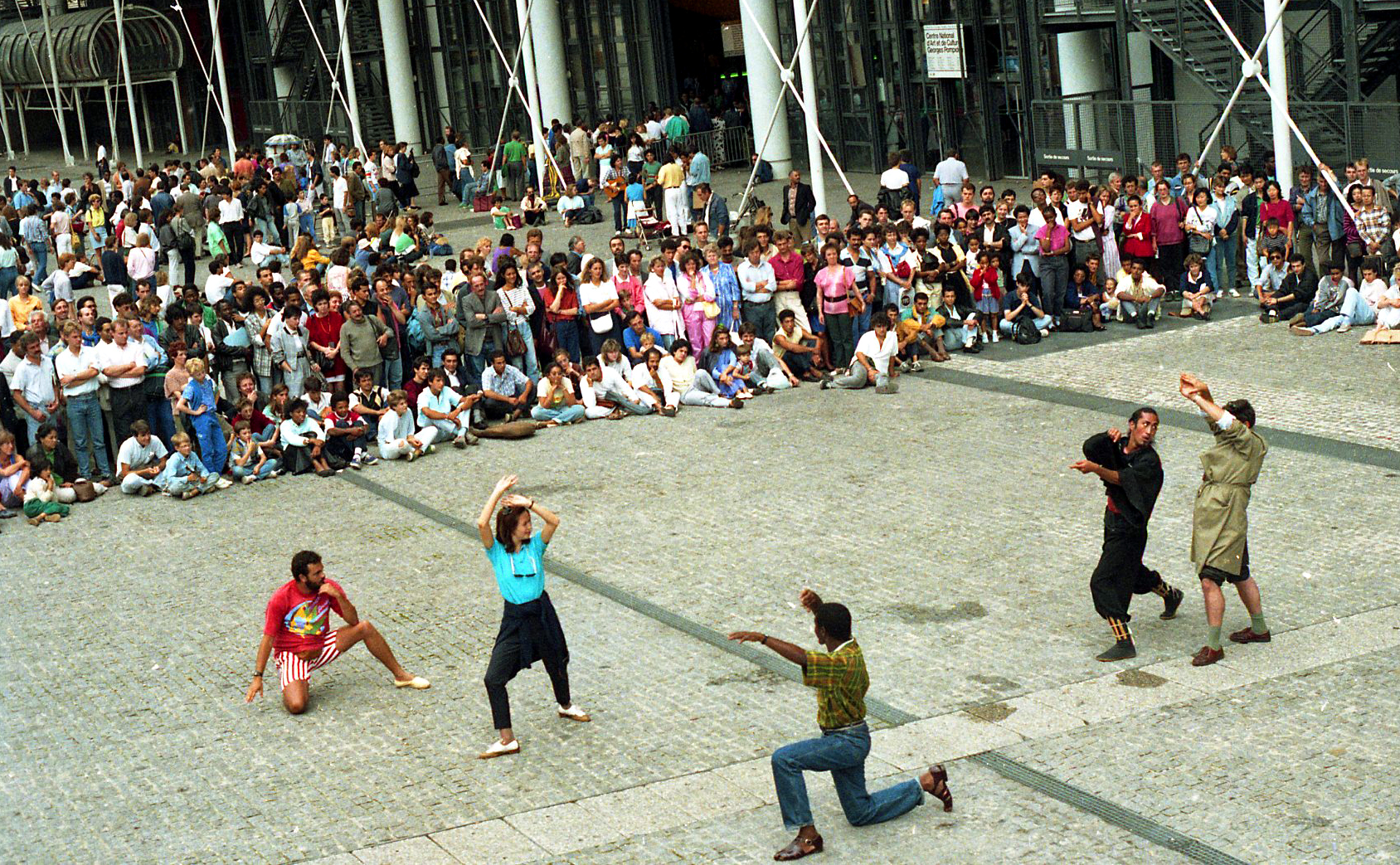|
Madurai Veeran
Madurai Veeran, also known as Veeran, is a Tamil folk deity popular in southern Tamil Nadu, India. His name literally means, "warrior of Madurai". Legend According to the ''Maduraiveeraswamikathai'', Veeran was born to royal parents and was abandoned, and later adopted by a couple from the Arunthathiyar community. He grew up among them and became a guard in the court of Bommanna Nayakan. When on duty as a guard of the chieftain's daughter Bommi, he fell in love with her. At night, he sneaked up to her room, and the two eloped. During their escape, Bommanna Nayakan led an army after Veeran, and the latter defeated the army and killed Bommanna. The two then fled to Tiruchi, where Veeran was requested by the local king to defeat bandits terrorising his people, which he did so successfully and famously. His fame brought him to Madurai, which was also troubled by bandits. Thirumala Nayakar requested Veeran to help him. Veeran then met Vellaiyammal, a royal dancer, who was attr ... [...More Info...] [...Related Items...] OR: [Wikipedia] [Google] [Baidu] |
Murti
In the Hindu tradition, a ''murti'' ( sa, मूर्ति, mūrti, ) is a devotional image such as a statue, or "idol" (a common and non-pejorative term in Indian English), of a deity or saint. In Hindu temples, it is a symbolic icon. Thus, not all Hindu images of gods and saints are ''murti'', for example, purely decorative sculptures in temples and on the streets. A ''murti'' is itself not a god in Hinduism, but it is a shape, embodiment, or manifestation of a deity. ''Murti'' are also found in some nontheistic Jain traditions, where they serve as symbols of revered mortals inside Jain temples, and are worshiped in ''murtipujaka'' rituals. A ''murti'' is typically made by carving stone, wood working, metal casting or through pottery. Ancient era texts describing their proper proportions, positions and gestures include the Puranas, Agamas, and Samhitas.Klaus Klostermaier (2010), ''A Survey of Hinduism'', State University of New York Press, , pages 264–267 The expressio ... [...More Info...] [...Related Items...] OR: [Wikipedia] [Google] [Baidu] |
Meenakshi Temple
Arulmigu Meenakshi Sundaraswarar Temple is a historic Hindu temple located on the southern bank of the Vaigai River in the temple city of Madurai, Tamil Nadu, India. It is dedicated to the goddess Meenakshi, a form of Parvati, and her consort, ''Sundareshwarar'', a form of Shiva. The temple is at the center of the ancient temple city of Madurai mentioned in the Tamil Sangam literature, with the goddess temple mentioned in 6th-century-CE texts. This temple is one of the Paadal Petra Sthalams. The Paadal Petra sthalams are 275 temples of lord Shiva that are revered in the verses of Tamil Saiva Nayanars of 6th-9th century CE. The west tower (gopuram) of the temple is the model based on which the Tamil Nadu State Emblem is designed. Overview Madurai Meenakshi Sundareswarar temple was built by Pandayan Emperor Sadayavarman Kulasekaran I (1190 CE–1205 CE). He built the main Portions of the three-storeyed Gopuram at the entrance of Sundareswarar Shrine and the central portion of t ... [...More Info...] [...Related Items...] OR: [Wikipedia] [Google] [Baidu] |
Urumi (drum)
The ''urumi'' (; also known as ''urumee'') is a double-headed hourglass-shaped drum from the state of Tamil Nadu, South India. Two skin heads are attached to a single hollow, often intricately carved wooden shell. The preferred wood is jackwood, although other woods like rosewood may be used. Both left and right heads are usually made from cow hide that is stretched around a thin metal ring (sometimes lizard skin is used for the right head). The outer circumference of each head is perforated with approximately seven to eight holes. The two heads are held in tension by a continuous rope that is woven around the drum in a V-shape pattern. Additional small coils of string or metal are tied around each pair of ropes near the left head. These coils can be slide horizontally along the length of the drum, increasing or decreasing the tension between the heads as necessary. For example, during the monsoon season the drum heads will slacken so much that the instrument becomes unplayable. ... [...More Info...] [...Related Items...] OR: [Wikipedia] [Google] [Baidu] |
Sudalai Madan
Sudalai Madan (IAST: ) is a rural Dravidian folk tradition deity worshipped predominantly in South India, particularly in the districts of Thoothukudi, Tirunelveli, Tenkasi, Kanyakumari, and Thiruvananthapuram. He is considered by adherents to be a son of Shiva and Parvati. He seems to have originated in some ancestral guardian spirit of the villages or communities in Tamil Nadu, in a similar manner as Ayyanar. He is regarded as a kaval deivam (guardian deity) who protects people against evil forces. Sudalai Madan is also called Madan thampuran, Chudala madan, or simply as Madan. The deity Shiva is said to have created him and given him the name Sudalai Madan as the protector against evil forces, emanating from cemeteries and cremation grounds (''sudalai''). He is usually found with mother goddess Pechiamman, Brahmasakthi Amman, and Sudalai Mundan. Madathi is his consort. Sudalai is the guardian of the ''kodimaram'' (flagstaff) in several temples. Legend The tale of Suda ... [...More Info...] [...Related Items...] OR: [Wikipedia] [Google] [Baidu] |
Muneeswarar
Muneeswarar (Tamil: முனீஸ்வரன்) is a Hindu god. He is worshipped as a family deity in several Shaivite families in the Indian states of Andhra Pradesh, Tamil Nadu, Maharashtra, and Karnataka. His name is a combination of "Muni", meaning ''saint'', and "Ishvara", an epithet of Shiva. He is therefore an avatar of Shiva. Worship Muneeswarar is worshipped in Fiji, Karnataka, Chittoor district of Andhra Pradesh, Gudiyattam of Vellore district, and the northern part of Tamil Nadu in India, and more so in Malaysia, Singapore, Indonesia, Trinidad and Tobago, Guyana and Suriname, where there are many temples dedicated to him. There are many small temples in the Central Province of Sri Lanka, where many Tamil-speaking people live. During the British colonial period, people brought the deity to Sri Lanka. Since his weapon is the trident, Muneeswarar temples contain a trident placed in the ground. Lemons are often placed on the prongs of the trident. In most villages ... [...More Info...] [...Related Items...] OR: [Wikipedia] [Google] [Baidu] |
Karuppu Sami
Karuppu Sami (Tamil: கருப்பசாமி, IAST: Karuppasāmi) is one of the regional Tamil male deities popular among the rural social groups of Tamil Nadu and parts of Kerala. He is one of the 21 associated folk-deities, and is hence one among the demigods or kaval deivams in Dravidian folk religion. He is sometimes considered to be a form of Shiva among Shaivas. Muthu karuppasamy Temples and shrines Karuppu Sami temple is mostly found in the outskirts of the Village. Usually, the whole village contributes to the maintenance of the temple. These temples/shrines do not have traditional Gopurams and have large statues of Gods with large eyes, holding weapons like bow and arrow, swords, sickle and other weapons. There could also be statues of 7 Kannimar goddesses/Saptha Kanniyar (7 virgins) and animals, often a hunting dog, a lion and horse alongside the main idol of Karuppu Sami. Karuppu Sami worship is based on an ancient ancestral clan-based worship system, which ... [...More Info...] [...Related Items...] OR: [Wikipedia] [Google] [Baidu] |
Ayyanar
Ayyanar (IAST: Aiyaṉār, ta, ஐயனார்) is a Hindu deity venerated in South India and Sri Lanka. His worship is prevalent among the Dravidian peoples, Dravidian peoples. Some studies suggest that Ayyanar may have also been worshipped in Southeast Asian countries in the past. He is primarily worshipped as one of the Village deities of Tamil Nadu, guardian folk deities of Tamil Nadu. The temples of Ayyanar in the countryside are usually flanked by gigantic and colourful statues of him and his companions riding horses or elephants. Etymology The Tamil language, Tamil word ''Ayyanār'' is derived from the root word ''Ayya'', a honorific used in a Tamil language to designate respected one.Indrapala, K., ''The evolution of an ethnic identity: The Tamils in Sri Lanka C. 300 BCE to C. 1200 CE'', p.# Some people propose that ''Aryan'' could be the Sanskrit version of Tamil word ''Aiyyan'' which means the same. There is a well known Aryankavu Sastha Temple, temple dedicated ... [...More Info...] [...Related Items...] OR: [Wikipedia] [Google] [Baidu] |
Village Deities Of South India
The village deities of Southern India are the numerous spirits and other beings venerated as part of the Dravidian folk tradition in villages throughout South India. These deities, mainly goddesses, are intimately associated with the well-being of the village, and can have either benevolent or violent tendencies. These deities are presently in various stages of syncretism or assimilation with mainstream Hindu traditions. These deities have been linked back to common Indus Valley civilisation imagery, and are hypothesised to represent the prevailing Dravidian folk religion at the time. The worship of these deities at many times do not conform to the common tenets of Vedic traditions, especially in customs of animal sacrifice, the inclusion of the priesthood class, and iconography. Origins and history In general, scholars see the village deities of South India as continuations of religious traditions followed in the subcontinent before the arrival of the Indo-Aryans. In the ... [...More Info...] [...Related Items...] OR: [Wikipedia] [Google] [Baidu] |
Madurai Veeran (1956 Film)
''Madurai Veeran ''() is a 1956 Indian Tamil-language action film directed by D. Yoganand, written by Kannadasan, and produced by Lena Chettiar. Based on the folklore legend turned deity of the same name, it stars M. G. Ramachandran as the eponymous character, with P. Bhanumathi and Padmini playing his love interests. T. S. Balaiah, N. S. Krishnan and T. A. Mathuram play supporting roles. ''Madurai Veeran'' was the second film based on the legend after a 1939 film. It was released on 13 April 1956, during Puthandu (Tamil New Year). The film became a major commercial success, and had a theatrical run of over 200 days, thereby becoming a silver jubilee film. It was also a milestone in the careers of Ramachandran and Padmini, and led to many more similar films being made. Plot A baby is born to the chieftain of Varanavasi, but with an unlucky mark destined to bring doom to the state. Acting as per the dictates of the astrologer, the baby is abandoned in the forest. A cobbler ... [...More Info...] [...Related Items...] OR: [Wikipedia] [Google] [Baidu] |
Street Theatre
Street theatre is a form of theatrical performance and presentation in outdoor public spaces without a specific paying audience. These spaces can be anywhere, including shopping centres, car parks, recreational reserves, college or university campus and street corners. They are especially seen in outdoor spaces where there are large numbers of people. The actors who perform street theatre range from buskers to organised theatre companies or groups that want to experiment with performance spaces, or to promote their mainstream work. It was a source of providing information to people when there were no sources of providing information like television, radio etc. Nowadays, street play is used to convey a message to the crowd watching it. Street play is considered to be the rawest form of acting, because one does not have a microphone or loud speakers. Sometimes performers are commissioned, especially for street festivals, children's shows or parades, but more often street theatre ... [...More Info...] [...Related Items...] OR: [Wikipedia] [Google] [Baidu] |
Natya Shastra
The ''Nāṭya Śāstra'' (, ''Nāṭyaśāstra'') is a Sanskrit treatise on the performing arts. The text is attributed to sage Bharata Muni, and its first complete compilation is dated to between 200 BCE and 200 CE, but estimates vary between 500 BCE and 500 CE. The text consists of 36 chapters with a cumulative total of 6000 poetic verses describing performance arts. The subjects covered by the treatise include dramatic composition, structure of a play and the construction of a stage to host it, genres of acting, body movements, make up and costumes, role and goals of an art director, the musical scales, musical instruments and the integration of music with art performance. The ''Nāṭya Śāstra'' is notable as an ancient encyclopedic treatise on the arts, one which has influenced dance, music and literary traditions in India. It is also notable for its aesthetic Rasa (aesthetics), "Rasa" theory, which asserts that entertainment is a desired effect of performa ... [...More Info...] [...Related Items...] OR: [Wikipedia] [Google] [Baidu] |
Salem, Tamil Nadu
Salem (), is a major city in Salem district, located on the banks of Thirumanimutharu river in the Indian state of Tamil Nadu. Salem is the List of cities in Tamil Nadu by population, sixth largest urban agglomeration and metropolitan city in the state by population next to Chennai, Coimbatore, Madurai, Tiruchirappalli and Tiruppur and the sixth largest city in Tamil Nadu by area covering . History Early period During the third century BCE, there was period of Bogar – a notable Tamil Siddhar and at that time Jainism and Buddhism arrived. Around the beginning of the common era, the existence of a culturally and economically advanced society in Salem two thousand years ago is evident from the discovery of silver coins of the Roman Emperor Nero, Tiberices Claudices Nero (37–68 CE) in Koneripatti of Salem in 1987. Later Pandya dynasty started ruling the region around Salem. Later Pallava dynasty rises in Salem. After that Mahendra Varma Pallava came to Salem and Saivite pri ... [...More Info...] [...Related Items...] OR: [Wikipedia] [Google] [Baidu] |









_Lake.jpg)